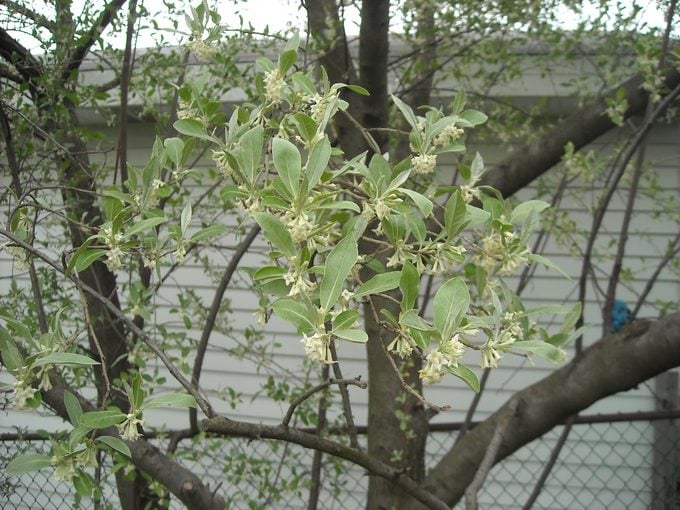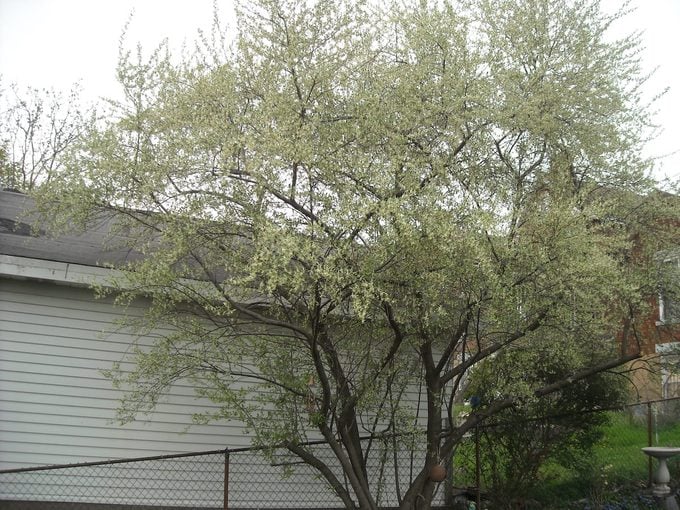Don’t Grow an Invasive Russian Olive Tree in Your Yard
Updated: Feb. 02, 2023
The Russian olive tree was once a popular choice. See why a garden expert says you should avoid this invasive tree—and what to plant instead.
Is a Russian Olive Tree Invasive?

“This shrub (above) was labeled as a witch hazel. Is it?” asks Birds & Blooms reader James Seifert of Pittsburgh, Pennsylvania.
Gardening expert Melinda Myers says, “It looks as though you ended up with a Russian olive tree (Elaeagnus angustifolia). Perhaps the plant was mislabeled, or possibly the witch hazel died and a seedling of Russian olive took its place.”
But unfortunately, Melinda points out that these trees are very aggressive and invade natural areas, outcompeting native plants, disrupting waterways and altering wildlife habitats. It is no longer recommended that people add Russian olive trees to their landscapes. The tree is listed as invasive in the majority of the United States and parts of Canada.
See more trees you should never grow in your yard.
Trees You Should Plant Instead of Russian Olive

A Russian olive tree typically grows to be anywhere between 10 to 25 feet. It can thrive in a variety of conditions, making it particularly good at adapting in areas where it’s not wanted.
“Russian olive is native to Europe and western Asia and was brought to the U.S. in the 1800s as an ornamental plant,” says Melinda Myers. “During the 1980s, it was recommended for wildlife plantings, erosion control and windbreaks.”
Although a number of birds will visit this tree to snack on its fruit, this can further the spread of this invasive plant. The birds and other wildlife can spread the tree’s seeds.
If you want to attract and feed birds, stick to other native trees that better provide for them. Some popular picks include winterberry, elderberry, hawthorn and beautyberry. Consult your local university extension office or garden center to find the top recommended options for your area.
Next, find out if an Amur maple shrub is invasive.




















